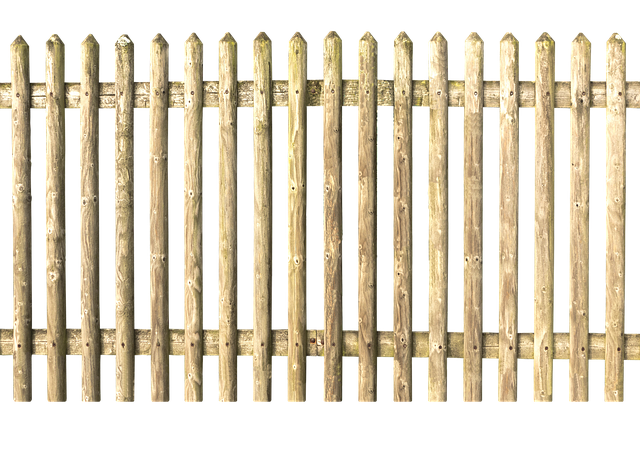In New Bedford, a well-maintained fence is not just an addition to your property but a crucial element of its overall aesthetics and security. This article delves into the comprehensive guide to fence repair and installation, addressing the common issues plaguing New Bedford residents. From understanding damage patterns to selecting ideal materials, and mastering installation processes, we offer practical tips for both novice DIYers and those seeking professional services. By the end, you’ll grasp the top benefits of expert fence care, ensuring your New Bedford property stays secure and stylish.
- Understanding Common Fence Damage in New Bedford
- Choosing the Right Fence Materials for Your Property
- Step-by-Step Guide to Fence Installation Process
- Tips for Efficient and Effective Fence Repair
- Top Benefits of Professional Fence Services
Understanding Common Fence Damage in New Bedford
Fences in New Bedford, like anywhere, are subject to various forms of damage over time. One of the most common issues is rot, particularly in areas with high moisture levels or where wood has been left untreated. This can lead to weak, sagging, or completely collapsed sections. Weather plays a significant role; strong winds, storms, and heavy snowfall can cause substantial damage, especially to older fences not designed for such conditions.
Another frequent problem is pest infestation, particularly from termites and carpenter ants, which can quickly deteriorate wooden fences. Additionally, vehicles colliding with fences, inappropriate use (like supporting outdoor furniture), or simple neglect can all contribute to fence damage. Recognizing these common issues is crucial for homeowners and business owners alike, as it allows for proactive maintenance and repairs, extending the life of their fences.
Choosing the Right Fence Materials for Your Property
When it comes to fence repair or installation, selecting the appropriate materials is a pivotal decision that impacts both the durability and aesthetic appeal of your property’s barrier. The market offers an extensive range of options, from traditional wooden picket fences to modern vinyl or metal alternatives. Each material has its unique advantages and considerations. For instance, wood is a popular choice for its classic charm and ability to blend seamlessly with natural landscapes but requires regular maintenance to prevent rot and pest damage.
On the other hand, vinyl fencing is low-maintenance, durable, and available in various styles and colors, making it an attractive option for homeowners seeking both functionality and aesthetics. Metal fences, often made of steel or aluminum, are known for their strength and longevity but may require additional coatings to prevent corrosion. Considering factors like climate, budget, and personal style will guide you towards the ideal fence material that aligns with your property’s unique needs and enhances its overall value.
Step-by-Step Guide to Fence Installation Process
Installing a new fence is a significant undertaking, but with proper planning and a systematic approach, it can be accomplished successfully. Here’s a step-by-step guide to help navigate the process:
1. Planning and Preparation: Begin by assessing your property and deciding on the type of fence best suited for your needs and aesthetics. Obtain any necessary permits from local authorities before starting. Measure the perimeter carefully, marking potential fence lines, and clear the area of debris and obstructions.
2. Setting the Foundation: Dig post holes along the marked fence line, ensuring they are deep enough to provide stability. Place concrete in the holes, allowing it to set completely. These posts will be the backbone of your fence, so ensure they are level and aligned correctly.
Proceed with installing vertical supports, connecting them securely to the posts, and creating a robust framework for the fence panels or rails.
Tips for Efficient and Effective Fence Repair
When repairing or installing a fence, proper planning is key to ensuring efficiency and effectiveness. Begin by assessing the extent of damage or wear on the existing fence. Look for loose or missing boards, rotten posts, or any structural issues that may require professional attention. Measuring and marking the fence line accurately will help guide your installation process, especially when replacing sections. Having the right tools is also essential; a sharp saw, hammer, screwdrivers, and a level can make quick work of repairs.
Regular maintenance can significantly extend the life of your fence. Staying on top of repairs allows you to catch minor issues early on, preventing more significant damage later. Keeping the fence clean and well-painted or treated will also protect it from the elements, ensuring a longer lifespan.
Top Benefits of Professional Fence Services
Hiring professional fence services offers numerous advantages for your property. One of the primary benefits is expertise and experience; specialists in this field have the know-how to handle various fence types, sizes, and styles, ensuring a perfect fit for your needs. They possess the tools and skills to perform precise measurements, allowing them to create or repair fences that align perfectly with your landscape, enhancing its aesthetic appeal.
Professional services also guarantee high-quality workmanship. These experts take pride in their work and use top-notch materials, ensuring longevity and durability. Regular maintenance and prompt repairs are a significant part of their service, preventing minor issues from turning into major problems. This saves you time and money in the long run, as you won’t have to worry about frequent fence replacements or extensive repairs.
